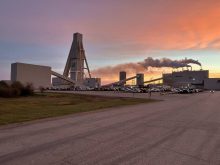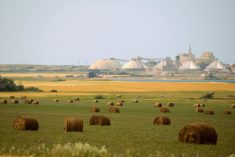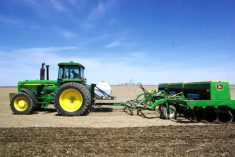Chicago | Reuters — U.S. farmers will likely use less nitrogen fertilizer this season with the cost sky-high even though the price of natural gas, the key ingredient to make it, is down 40 per cent from last year.
The reduction in usage should hit corn plantings more than other crops, since nitrogen is the key booster of corn yields.
“What we’re seeing this season is a reduction in rates,” said Ray Carpenter, senior vice-president of agronomy for Farmers Cooperative in Ames, Iowa, referring to nitrogen bookings. “Reduced rates mean reduced yield.”
Read Also

Alberta crop conditions improve: report
Varied precipitation and warm temperatures were generally beneficial for crop development across Alberta during the week ended July 8, according to the latest provincial crop report released July 11.
Fertilizer’s base feedstock, natural gas, is around $2.716 per million BTU, down from $4.536 last year (all figures US$). The price of anhydrous ammonia fertilizer remains high — around $650-$700/ton.
The disparity between the steep cost of fertilizer and the lower cost of natural gas is because fertilizer inventories remain thin due to 2014 shipping backlogs and because the industry is controlled by a few big players.
“The reality is input costs don’t come down as fast as the break-even price,” said analyst Sterling Liddell of Rabobank.
Crops require nitrogen, potassium and phosphorus, with corn the single biggest user of nutrients. It takes roughly one pound of nitrogen per acre to yield one 25-kg bushel of corn.
Crop specialization has made corn acres, planted year after year, increasingly dependent on nitrogen.
“I don’t want to overspend,” said Iowa farmer Mark Recker, who will begin fieldwork soon. “I’m debating how much side dressing I want to do, splitting applications. I may back off compared to previous years.”
Recker, an Iowa Corn Growers director, added: “When you had $6 corn, it drove me to put on a little higher nitrogen to get higher yields. Now you look at it much more economically.”
The U.S. Agriculture Department projects farm gate prices for corn this season at $3.50-$3.90 a bushel, versus $6.89 two years ago. Soybeans are projected at $9.45-$10.95, versus $14.40 in 2013.
Liddell said if farmers plant one million to two million fewer corn acres this spring, anhydrous ammonia could fall $50-$100 a ton.
Some analysts are more bearish.
“The cost of gas and ammonia right now is around $100 a ton. They’re selling it in Midwest for $600 a ton,” said one fertilizer industry source.
“So there’s a lot of room for prices to come down. You could see a 40-50 percent drop by the end of the year.”
— Christine Stebbins is a Reuters correspondent covering grain and oilseed markets from Chicago.













